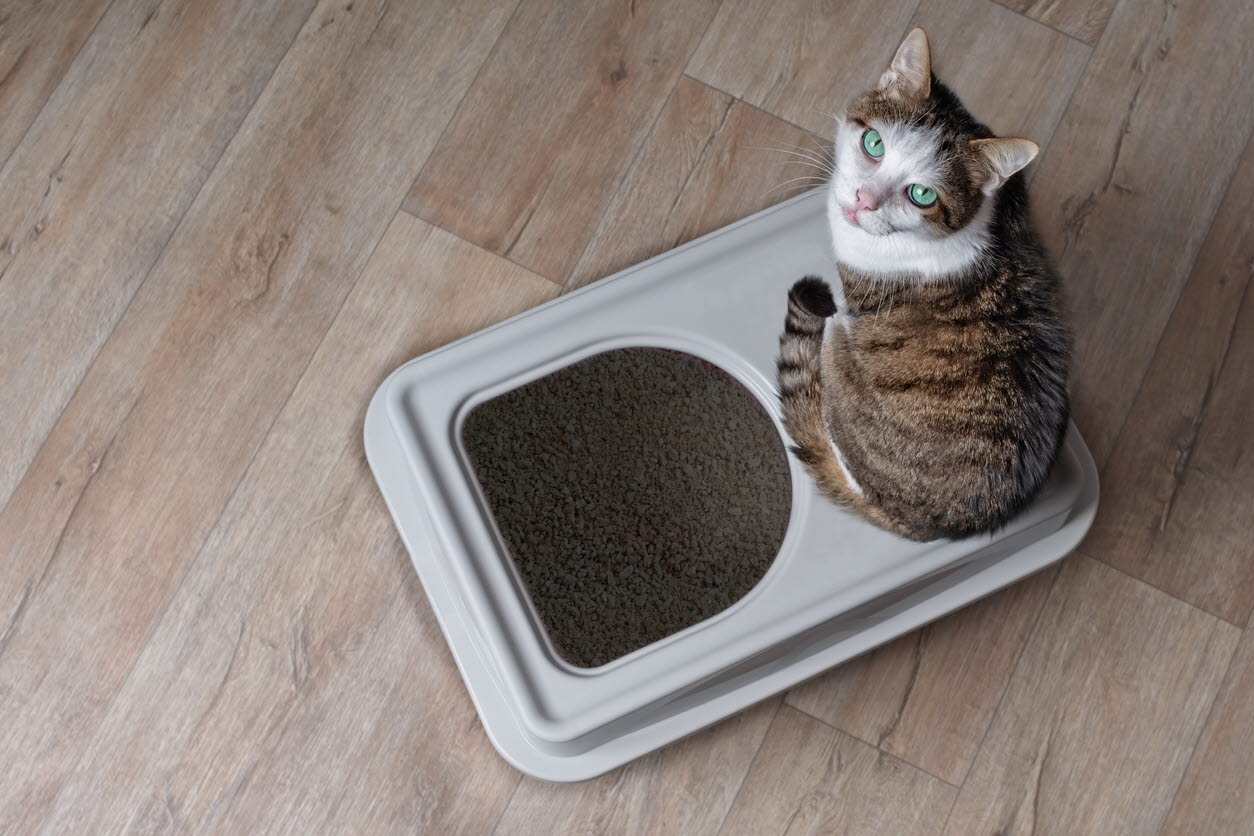Kitty litter and cats

Cats adapt very well to living indoors, which not only helps save our native wildlife but keeps them happy and healthy. It also makes cats fantastic pets for people living in units or apartments. If you’ve recently brought a new kitten into your household, apart from providing access to fresh water and food, one of the most important things to set up is a litter tray for the cat’s toileting.
Cats like their privacy!
Cats like their privacy when toileting, so position the litter tray away from where their food and water bowls are located. If you have more than one cat, it’s a good idea to have multiple litter trays positioned separately, one more tray than the number of cats, as this can help reduce any behavioural issues between the cats.
The litter tray should be large (bigger than the standard trays sold widely) and you should place at least a 5cm depth of litter within the tray. Toilet training your kitten involves regularly showing them the litter tray, which should be located in an easily accessible place.
Cats like a clean area to toilet so remember to clean the litter tray frequently as soon as the tray has been used and at least once a day replacing all of the litter every week. Wash your hands to minimise the risk of any disease transmission.
Why is my cat urinating outside of the litter tray?
Cats may start going to the toilet outside of the litter tray for many different reasons: this may indicate that the cat doesn’t like the type of litter being used, or that they don’t like the location of the tray, or the tray is not being cleaned often enough or they are stressed or there is an underlying health problem.
There are a variety of reasons why cats can be stressed, including if there are new animals, people or different furniture in the home. Speak with your veterinarian for further advice about any problems you might be having with your cat’s toileting.
Types of cat litter
There are various different types of cat litter available for use in your cat’s litter tray. If you are bringing a new kitten home, then check with the pet shelter or breeder about what type of kitty litter they’ve been using, and you can consider using the same type at home so your kitten will be familiar with it, or you can slowly transition to a new type of litter.
The different types of cat litter are often referred to as clumping or non-clumping litter, depending on whether the litter clumps together with moisture, which can affect how often the litter needs to be changed. But it’s worth remembering, that cats always appreciate a regularly cleaned litter tray.
Cat litter can be made from a variety of substrates: recycled paper, clay, corn or pine and silica crystals. Shredded paper, sand and soil can also be used as litter. Some cats have a preference for certain substrates. Remember to make sure that the litter at least 5 cm deep. Your local veterinarian and vet nurse can provide further advice on the best type of cat litter which might suit your situation.
Some cats like closed in litter trays, most prefer open trays whichever one your cat prefers remember to regularly clean the tray(s) and make the litter deep.
